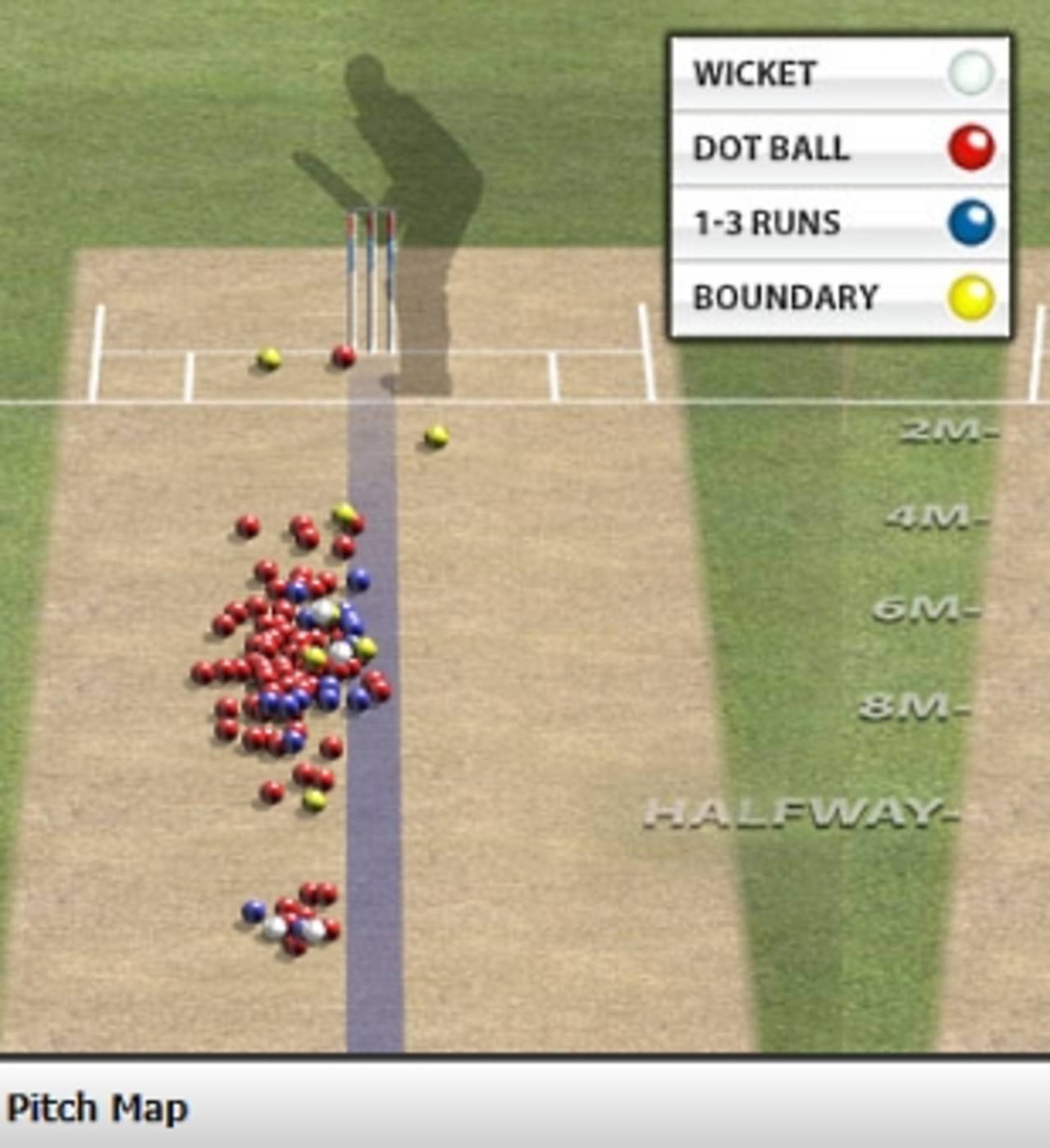It's not often that a fast bowler takes seven Indian wickets in an innings, especially if the match in question is played on slow, low Indian tracks. The chances of achieving these figures become even slimmer if you are asked to bowl on the usually dull second and third days of a Test. Though the pitch at Bangalore for the second Test between India and New Zealand isn't a typical Indian dustbowl, it is still a far cry from being a fast bowler's haven. So the efforts of Tim Southee, who was picked in place of Chris Martin, become more creditable. While the other New Zealand bowlers were effectively blunted late on day two, Southee shone as the sole redeemer.
A potent bowler with the new ball and quite threatening at the death with his strict and accurate yorkers, Southee looks like he is being primed for the role of New Zealand's premier bowling prospect.
What is it that makes Southee a tremendous possibility? More importantly, what did he find in the pitch on the second day of the Test that the likes of Zaheer Khan and Umesh Yadav couldn't find on the first day?
For starters, Southee has the distinct advantage of height over his Indian counterparts, which helped him extract a bit more bounce from the surface. His high arm action also accentuated that advantage by a couple of feet. His biggest strength in this Test, though, has been the lines he operated in. Thanks to the lack of bounce, pace and lateral movement off the surface, the margin for error on subcontinental pitches is really small. The moment you offer a bit of room, Indian batsmen force the ball through the off-side. If you try to bowl straighter and drift the ball slightly towards leg, they quickly bring their supple wrists into action to dispatch it. Hence it is imperative to operate in the fourth-fifth stump line to keep the batsmen honest.
That's exactly where Southee remained for the better part of his bowling stint. In addition to the teasing lines, he pitched the ball a foot fuller and brought the batsmen forward. Since there's very little movement available off the surface, bowlers must make the most of the time the ball spends in the air. The longer it stays in the air, the better the chances of doing something. Good wrist position and near-perfect release allowed Southee to swing the ball in the air, which deceived the batsmen.
Southee did something else very smart that many bowlers usually ignore, which was to use the width of the crease to create different angles. Once he was able to shape the ball away from the right-hander in the air and get his bearings right, he started changing his positioning on the crease. He increased the frequency of his visits to the corner of the crease once the ball got a little older and didn't swing it as much in the air. If the ball isn't swinging much, it's relatively easy to cover the swing if bowled from closer to the stumps. But the same movement can trouble the batsman if bowled from the corner of the crease, for the angle lures you into believing that the ball is heading into you, which forces you to play inside the line and hence even the tiniest away movement becomes too much to handle.
In addition to using the crease astutely to make the away-going ball far more threatening, Southee also bowled a very effective off-cutter. Most of those off-cutters were also bowled from the corner of the crease with a slightly scrambled seam. The one that got Virat Kohli was the prime example of out-thinking a very well-set batsman. Many bowlers try to bowl with a cross-seam instead of seam up to scuff up the ball in Indian conditions; however, those deliveries are not only easier to pick but also rarely do something off the surface except holding up or bouncing just a tad higher. Southee has induced the off-cutter by putting more pressure on the index finger at the point of release and by bringing the non-bowling arm down a fraction earlier than normal. The change has been too subtle for the batsman to pick and if the batsman fails to acknowledge the scrambled seam in the air, he is doomed.
If Southee can stay fit and maintain the pace, attack and swing he showed through his 24 overs at the Chinnaswamy Stadium, the role of New Zealand's pace spearhead seems his - with potent support from Chris Martin, Trent Boult and Doug Bracewell.
Former India opener Aakash Chopra is the author of Out of the Blue, an account of Rajasthan's 2010-11 Ranji Trophy victory. His website is here and his Twitter feed here
